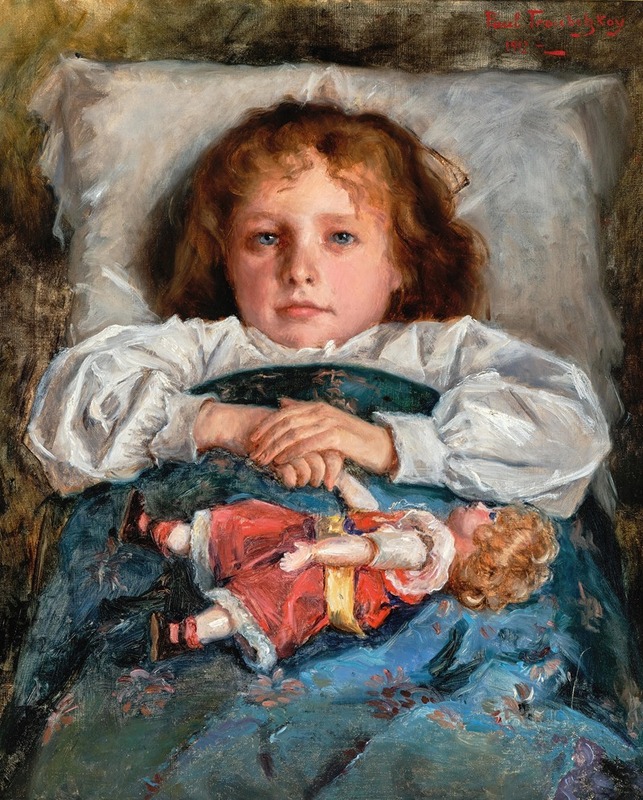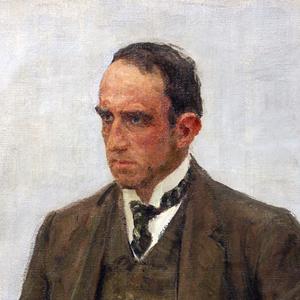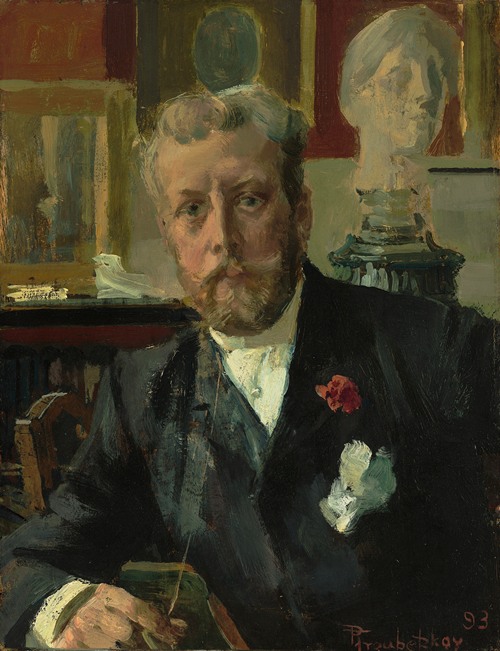

Prince Paul Troubetzkoy was the second son of a Russian diplomat, Prince Pierre Troubetzkoy, and an American soprano, Princess Ada, who had settled in Italy. Troubetzkoy studied sculpture in Milan. He quickly abandoned his formal studies in favour of independently following a more impressionistic, highly personalized style of sculpture. An early fascination with modelling animal forms developed into a depiction of themes of domestic life and, later aristocratic portraiture. His first public recognition came in 1894 when he won a gold medal in Rome for a statue Indian Scout based on the Buffalo Bill show that had been in Milan the year before.
This success launched Troubetzkoy's career and he was soon thereafter awarded the title of Professor of Sculpture at the Imperial Academy of the Fine Arts in Moscow during which tenure he executed statues of such notable Russian figures as Count Tolstoy, the Grand Duke Serge Alexandrovich and the Grand Duchess Elisabeth Feodorovna. His reputation in Europe was solidified when he was awarded the Grand Prix at the 1900 Exposition Universelle. By 1907 Troubetzkoy had settled in Paris. His studio became a meeting place for distinguished social, diplomatic, intellectual and artistic figures of the time, contemporaries such as Auguste Rodin, Paul Caesar Helleu, George Bernard Shaw and Anatole France.

